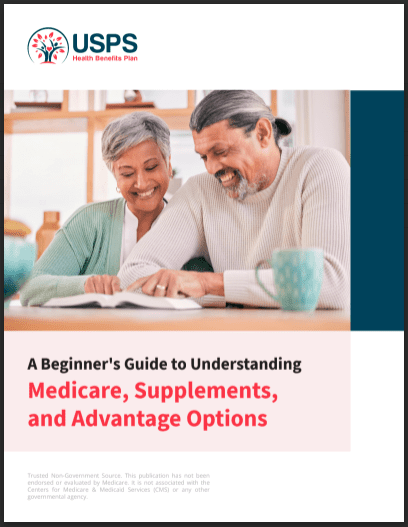Key Takeaways
-
If you’re a USPS retiree or employee turning 65 or already enrolled in Medicare, the new PSHB program rules may require you to enroll in Medicare Part B to maintain your health coverage.
-
Failure to enroll in Medicare Part B when required under PSHB could lead to loss of drug coverage or higher out-of-pocket costs.
Understanding the Shift to PSHB in 2025
Starting January 1, 2025, all USPS employees and annuitants transition to the new Postal Service Health Benefits (PSHB) Program. This move replaces the longstanding Federal Employees Health Benefits (FEHB) Program for the USPS workforce. Administered by the U.S. Office of Personnel Management (OPM), the PSHB introduces new coordination requirements with Medicare, especially Medicare Part B, for those eligible.
If you’re nearing retirement or already drawing your annuity, it’s essential you understand how these new rules could affect your access to healthcare and prescription drugs.
Who Must Enroll in Medicare Part B Under PSHB?
Enrollment in Medicare Part B is now mandatory under PSHB for certain USPS retirees and family members. You are required to enroll if:
-
You are a USPS annuitant or family member entitled to Medicare Part A (premium-free), AND
-
You retired after January 1, 2025, OR
-
You are actively employed but were not yet age 64 as of January 1, 2025
If either of these conditions applies, you must sign up for Medicare Part B when you become eligible to retain your full PSHB benefits.
Exemptions from the Requirement
You are not required to enroll in Medicare Part B under PSHB if:
-
You retired on or before January 1, 2025
-
You were age 64 or older as of January 1, 2025 (even if you’re still working)
-
You live permanently outside the United States
-
You’re enrolled in benefits through the Indian Health Service or Veterans Affairs
Why Medicare Part B Enrollment Matters
Medicare Part B covers outpatient services like doctor visits, preventive care, durable medical equipment, and more. Under PSHB, Medicare Part B plays a bigger role in cost coordination:
-
If you are enrolled in both PSHB and Medicare Part B, you may receive lower deductibles and copays.
-
Prescription drug coverage is automatically provided through a Medicare Part D EGWP plan, integrated into your PSHB plan. However, this drug coverage is only available if you’re enrolled in Part B.
Failing to enroll could lead to loss of prescription drug coverage and higher out-of-pocket costs for other services.
How to Enroll in Medicare Part B
You generally become eligible for Medicare at age 65. Your Initial Enrollment Period (IEP) begins three months before the month of your 65th birthday and lasts for seven months total.
-
Enroll through the Social Security Administration (SSA)
-
It’s best to enroll early during your IEP to avoid delays and ensure seamless coverage
If you missed your IEP, there are Special Enrollment Periods (SEPs) and General Enrollment Periods (GEP) to help you sign up, but late enrollment may result in penalties.
What Happens If You Don’t Enroll?
If you fall under the mandatory enrollment category and choose not to enroll in Medicare Part B, here’s what you could face:
-
Loss of PSHB prescription drug coverage starting in 2025
-
No access to the Medicare-integrated benefits that lower your out-of-pocket costs
-
Higher long-term costs due to late enrollment penalties
This is especially critical since your Part D drug plan through PSHB will only function if you’re enrolled in Medicare Part B. Declining Part B also means you cannot re-enroll in the Part D drug coverage later, unless you have a new Part B enrollment period.
Medicare Part D Under PSHB: What’s Changing?
One of the most important changes under PSHB is how prescription drug coverage works. As of 2025:
-
Your PSHB plan includes a Medicare Part D Employer Group Waiver Plan (EGWP) if you’re eligible
-
There is an annual out-of-pocket cap of $2,000 for prescription drug costs
-
A $35 monthly cap applies to insulin
-
The plan offers access to an expanded pharmacy network
This coverage is conditional. If you do not have Medicare Part B, you are automatically opted out of the PSHB Medicare drug plan and lose access to these benefits.
Planning Ahead: What You Should Do Now
Whether you’re a current employee or a retiree, preparation is key. Here are steps you can take to avoid being caught off guard:
-
Check your Medicare eligibility date if you’re nearing 65
-
Review your retirement date—if it’s after January 1, 2025, Medicare Part B will be required
-
Look for notices—you’ll receive a letter from OPM about PSHB changes and any required action
-
Evaluate your healthcare needs—compare what services you use now with those covered by Medicare Part B
-
Speak to a licensed agent to make sure you comply with the new rules while protecting your benefits
Understanding the Cost of Medicare Part B
In 2025, the standard monthly premium for Medicare Part B is $185. Higher-income USPS retirees may have to pay an Income-Related Monthly Adjustment Amount (IRMAA) based on your Modified Adjusted Gross Income (MAGI).
-
Part B deductible: $257 per year
-
Outpatient services are usually covered at 80% by Medicare, with the remaining 20% covered by your PSHB plan (if enrolled)
These costs are manageable when coordinated with PSHB. Without Part B, your out-of-pocket expenses could significantly increase.
Coordination of Benefits Between PSHB and Medicare
When you have both Medicare and PSHB:
-
Medicare is the primary payer, and PSHB is secondary
-
Your PSHB plan may waive or reduce deductibles and copayments
-
You get broader network access and drug benefits through the integrated Medicare Part D EGWP
But this coordination only works if you are actively enrolled in Medicare Part B.
Special Enrollment Period in 2024
To help USPS retirees and employees make the transition, a Special Enrollment Period (SEP) for Medicare Part B ran from April 1 to September 30, 2024. During this time, eligible individuals could sign up for Medicare Part B without facing late penalties. If you missed this SEP, your next opportunity depends on whether you qualify for another SEP or need to wait until the General Enrollment Period.
What If You’re Already Enrolled in Medicare?
If you’re already enrolled in both Medicare Parts A and B, you’re ahead of the game. PSHB will coordinate with your Medicare coverage automatically starting in 2025.
Make sure to:
-
Update your records with your PSHB plan
-
Ensure your Medicare ID is on file to activate your prescription drug benefits
-
Check your plan brochure for any additional steps required
For Active Employees Turning 65
Even if you are still working, turning 65 activates your Medicare eligibility. Here’s what to consider:
-
You may delay Medicare Part B without penalty if you’re covered under an active PSHB plan
-
Once you retire, you must enroll in Part B to retain full PSHB benefits
-
Failure to enroll after retirement may lead to the same penalties and coverage losses
So, plan ahead by understanding your expected retirement date and how it aligns with your Medicare timeline.
Medicare and PSHB: Long-Term Benefits
Complying with Medicare Part B enrollment requirements under PSHB can help you:
-
Maintain seamless health and prescription drug coverage
-
Avoid late enrollment penalties and higher costs
-
Take advantage of expanded pharmacy access and cost-saving benefits
Ignoring the new rules can leave you without critical coverage and could significantly impact your retirement healthcare budget.
Stay Informed and Take Action
The transition to PSHB marks a major change for USPS employees and retirees. With Medicare Part B enrollment now a condition for continued access to full health and drug benefits, preparation is essential.
Talk to a licensed agent listed on this website to help you review your eligibility, avoid penalties, and secure the coverage you need.











